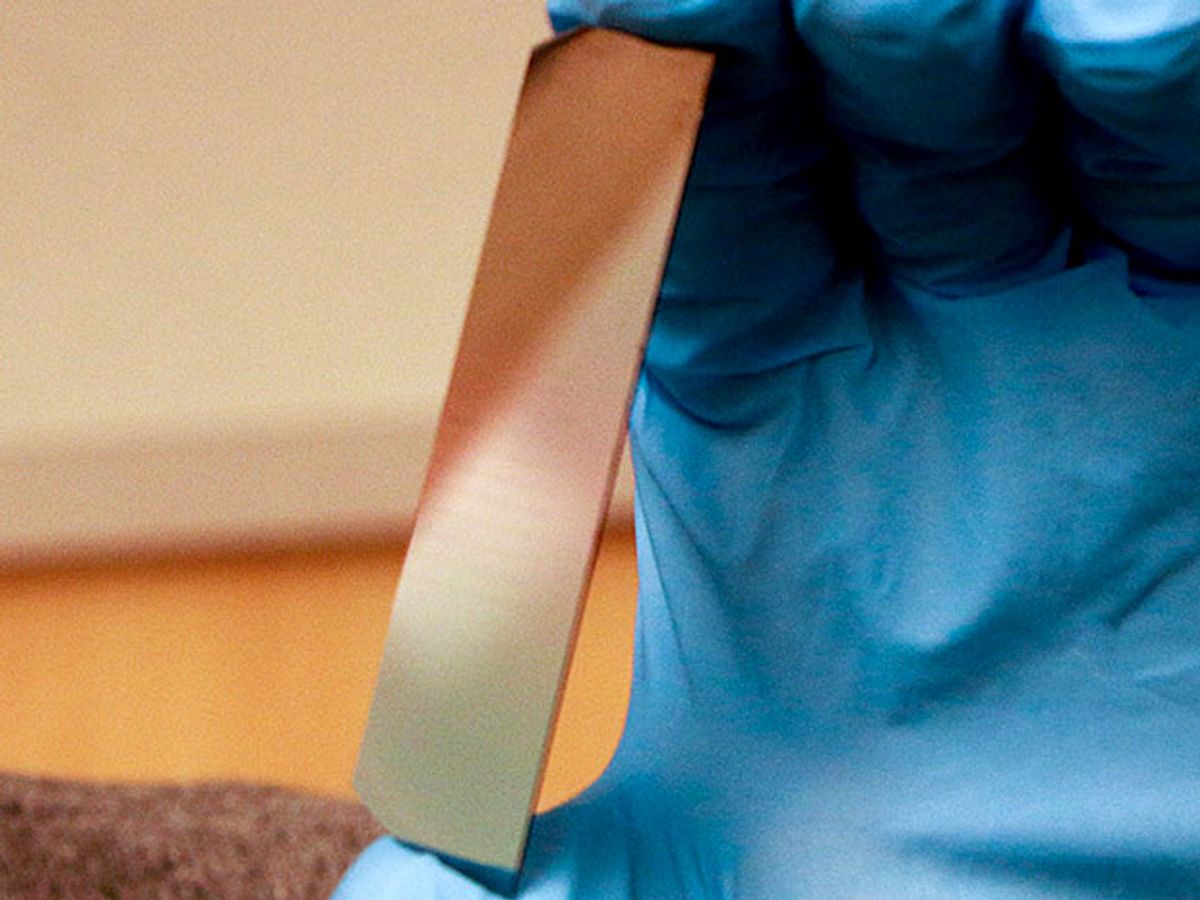Researchers at the University of Utah have etched nanoscale pillars and holes into silicon wafers to create a polarizing filter that lets in more light than today’s filters. Ultimately the new filter could lead to brighter mobile displays.
“When you take a picture and put the polarized filter on, you are trying to get rid of glare,” said Rajesh Menon, an associate professor at the University of Utah, in a press release. “But most polarizers will eliminate anywhere from to 60 to 70 percent of the light. You can see it with your eyes.”
In research published in the journal Optica, the Utah researchers created a polarizing filter that functions in the same way as standard polarizers but allows up to 30 percent more light to pass through it.
To achieve this improvement, the researchers looked at how polarizing filters in use today operate. In today’s polarizing filters only half of the light is able to pass through because ambient light consists of equal parts light polarized along a horizontal axis and light polarized along a vertical axis. Polarizing filters allow either the horizontal or vertical energy through. The other half of the energy is reflected back or absorbed.
To overcome this limitation, the researchers etched nanoscale pillars and holes into silicon wafers in such a way that it can, essentially, rotate light with a polarization perpendicular to its principal axis by 90 degrees. Light with polarization parallel to its principal axis is transmitted undisturbed.
With this new filter, a large portion of the light that is either reflected back or absorbed in traditional polarizing filters is instead converted into the desired polarized state—eliminating glare.
In their latest design, the Utah researchers were able to make a filter that allowed up to 74 percent of the light through. However, in future iterations they believe they can create a filter that allows all the light to pass through and still eliminate glare.
LCDs with such a filter would be brighter and require less power to achieve that brightness, leading to longer lasting batteries. The researchers also note that these filters could be helpful to photographers who are looking to get more detail in their photos in low-light environments.
While the researchers concede that it could take five to 10 years before this technology finds its way into our mobile devices, they have already begun investigating how to increase the size of the filter and manufacture it with less expense.
Dexter Johnson is a contributing editor at IEEE Spectrum, with a focus on nanotechnology.



